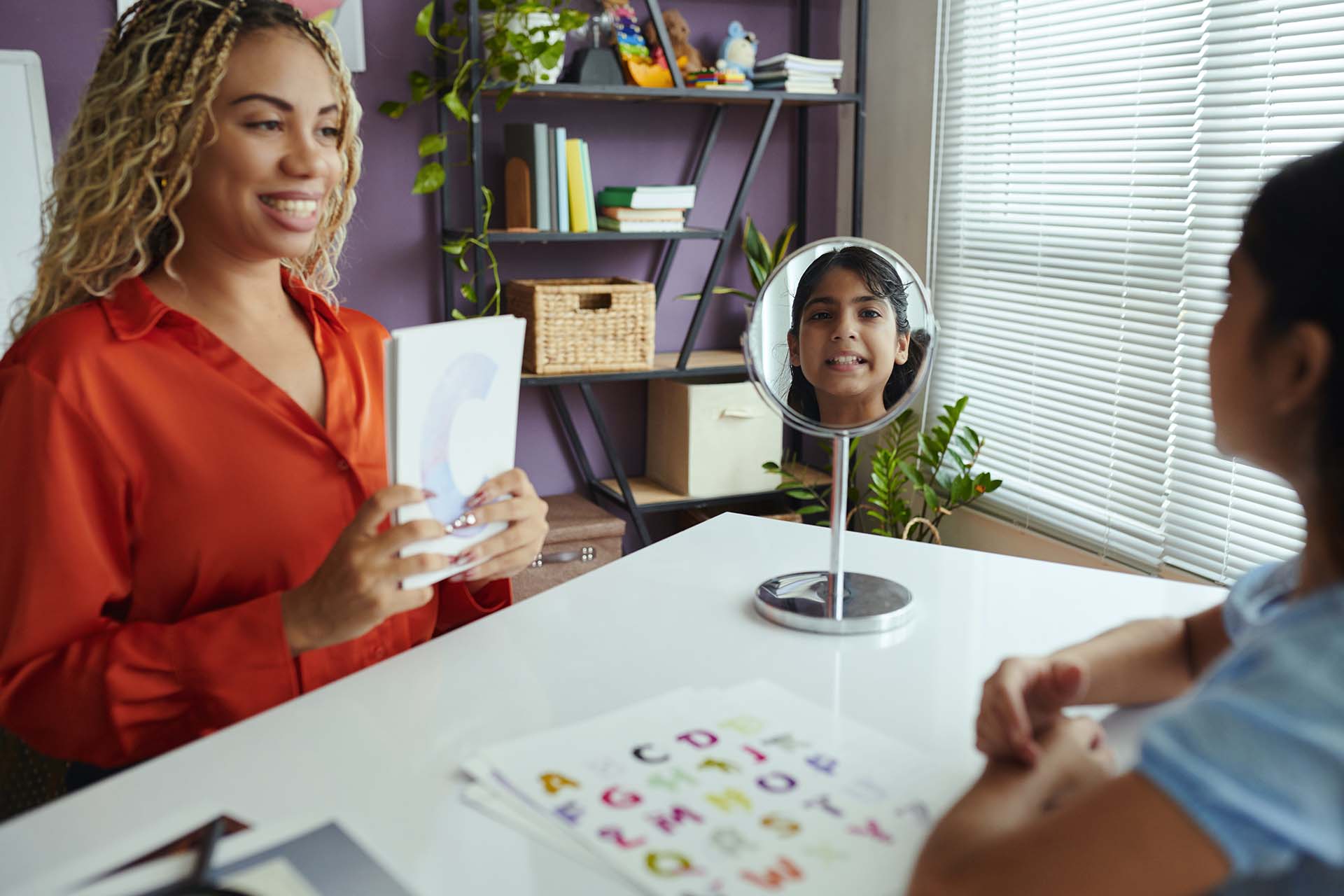Stuttering
Stuttering (Disfluency) is a communication disorder that interferes with a person’s ability to speak fluently. It involves the repetition, prolongation or blockage of sounds, syllables or words. These disrupt the natural flow of speech. These disruptions may also present with visible tension in the face (facial twitching/scrunching, mouth tension, hand tapping, eye blinking etc).
The severity of an individual’s stutter can vary. The degree of impact it has on social interactions, academic or working life varies from person to person.
Typical Disfluencies that most people present with, include:
Whole phrase repetitions:
This is when you repeat a phrase of more than one word (Example: “Why is … why is she here?”)
Single whole word repetitions:
This is when you repeat a single word (Example: “Where … where is the ball?”)
Interjections:
The addition of an extra word that doesn’t need to be inserted, usually “um”, “uh”, or “like” (Example: “What…um is your name?”)
Revisions:
When you change what you had originally started to say (Example: “What … when are they here?”)
Hesitations:
Leaving a long pause in your speech whilst thing about what to say a (Example: “I think you should ….. read this article”)
Repetition of single sounds:
Example: “b – bbbbbal”
Repetitions of syllables:
Example: “ba-baball”
Prolongation:
You will hear a sound being stretched or held as its being said (Example: “EEEEEEEven I know”)
Blocks:
This is when there is a stop in the flow of speech; you may see someones mouth move, but not hear any sound come out.
Extra movements while stuttering:
In addition to when people stutter, they may present with additional movements that are outside their control, like closing/blinking their eyes, lips/ cheek/jaw becoming very tense during stuttering, taping fingers or feet or head leaning.
Avoidance:
Some people who stutter avoid certain words or sounds because they know that they are more likely to stutter on them
We have a variety of treatments available which will be selected based on the persons age, experience with previous treatments, communication goals and stuttering severity.
However, the two evidence-based interventions commonly used at Care2Communicate are:
01
The Lidcombe program
(Treatment for stuttering in children)
02
The Camperdown program
(Treatment for stuttering in adults)
In-Person Across Sydney
Whether in your home, school, aged care facility or supported workplace we will come to you.
Telehealth Across Australia
Speech Pathology has never been so accessible! Care 2 Communicate can provide online sessions Australia wide.
In-Person Across Sydney
Whether in your home, school, aged care facility or supported workplace we will come to you.
Telehealth Across Australia
Speech Pathology has never been so accessible! Care 2 Communicate can provide online sessions Australia wide.
When to reach out
If you have any concerns about any areas of your child’s communication listed above, please contact Care2Communicate. We are always happy to discuss and provide advice for any questions or worries you may have about your child’s communication development.





